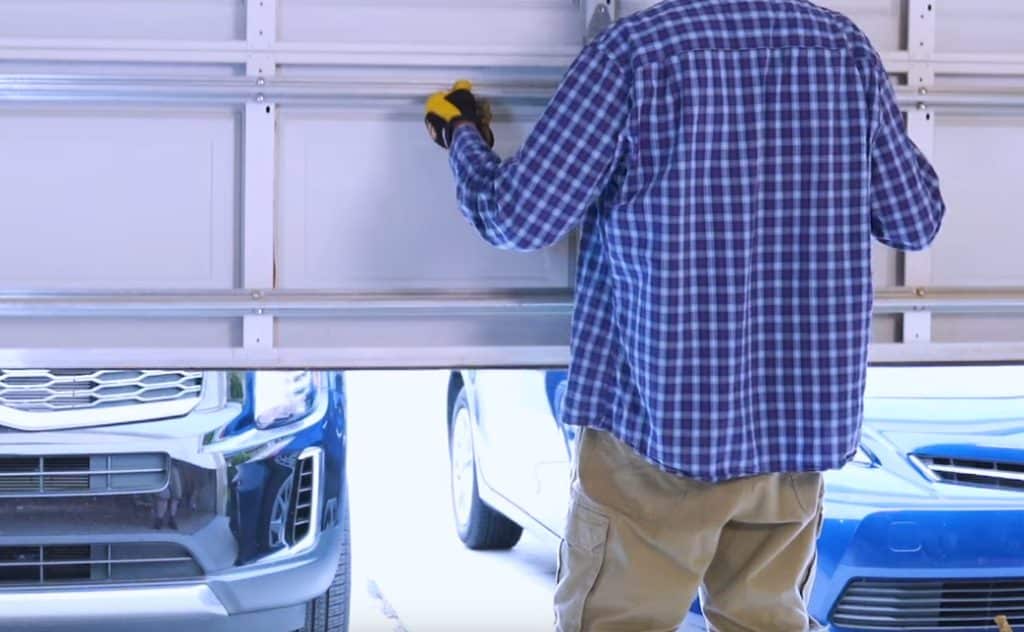The garage door is a key component of the home. It provides security and convenience, allowing homeowners to access their garages without having to manually open and close heavy doors. Unfortunately, it can be prone to various issues that can prevent it from working properly. This article will explore common garage door problems, as well as strategies for preventing them.
Garage doors may develop faults due to regular wear-and-tear or improper maintenance. Issues such as sticking tracks, broken springs, misaligned sensors, damaged door panels or cables can all have an impact on its performance. If not addressed promptly, these problems could lead to further damage or even injuries if left unchecked.
Furthermore, some minor adjustments may also help reduce the likelihood of developing bigger problems in the future. These include lubrication of moving parts, cleaning of track rollers and checking for loose screws and bolts regularly. By understanding the causes behind potential issues with one’s garage door and taking appropriate steps to address them early on, homeowners can ensure their safety and keep their systems functioning optimally for years to come.
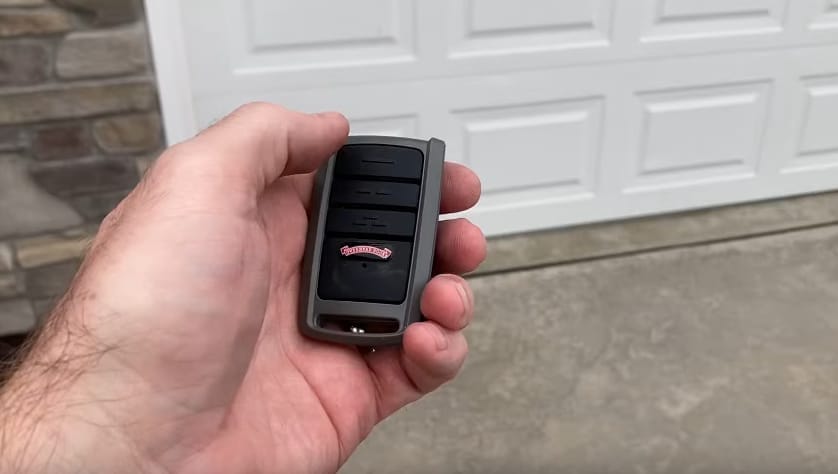
Identifying And Fixing Garage Door Sensor Issues – Remote Control
Garage door repair is a common issue for homeowners. Doors garage are prone to damage from wear and tear, faulty installations, or improper maintenance. Most problems can be prevented with the proper care of one’s doors garage. In order to identify potential issues in advance, it would be beneficial to understand how each component works and what could cause it to malfunction.
The most common problem within a garage door system is the sensors located on either side of the door that detect when an object passes through them. If these sensors fail, they will not properly detect when the door should open or close leading to possible safety risks or damages. The purpose of the sensors is to prevent the garage door from closing if the laser beam is broken. To prevent this from happening, regular inspection of the wiring and connections must take place as part of normal door springs maintenance protocol. Additionally, if any fraying wires or damaged connectors are noticed during installation of a new door opener then professional help for further repairs may need to be called in for safe operation. Properly inspecting and maintaining all components before installing a new door installation is key for avoiding future sensor malfunctions down the line.
By understanding how each component operates, how the door opens and closes and conducting routine inspections, many serious issues with garage doors can be avoided which ultimately saves time and money in costly repairs down the road.
Repairs And Maintaining Garage Door Openers
Maintaining and repairing garage door openers is an important part of keeping a secure entryway. Garage door service professionals can help fix any issues with the opener, but homeowners should also keep it in good working order on their own. These are some of the common garage door opener problems and how to fix them. Regularly checking the controls, lubricating all moving parts, and ensuring that nothing interferes with its operation are some simple steps to take for preventative measures. Doing these basic maintenance tasks like lubricating your garage door will minimize the need for costly garage door repairs down the road.
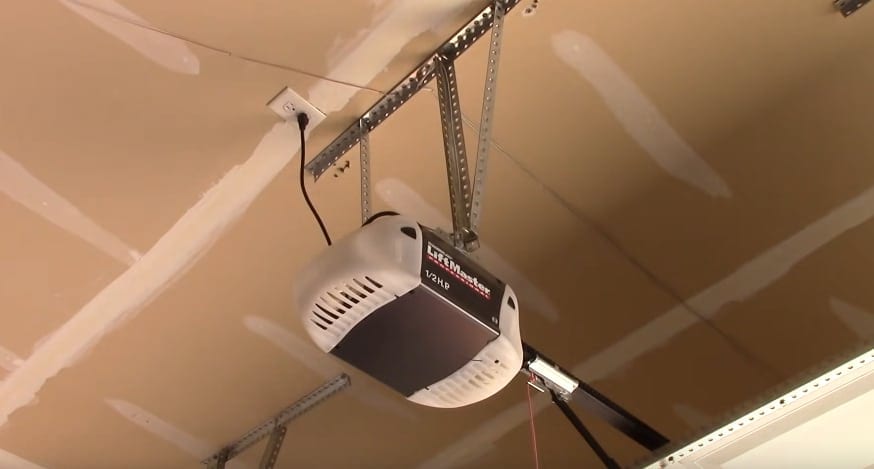
It is important to be aware of common problems like power loss due to worn-out batteries or misaligned sensors causing nonstop opening & closing. If such malfunctions occur, they should be addressed as soon as possible by scheduling an inspection from a licensed technician who specializes in garage door opener repair. By following through with regular inspections and performing minor fixes when needed, one can extend the life of their opener and avoid potential safety hazards associated with faulty equipment.
In addition to taking proactive measures towards avoiding major damage, regularly scheduled garage door service visits can identify any underlying issues before they become bigger problems. These services typically include inspecting cables, rollers, springs and other components for signs of wear & tear as well as testing safety features for proper functionality. Having knowledgeable technicians diagnose and fix them quickly can save time and money in the long run. Transitioning into the next section about fixing common issues with garage door springs allows readers to gain further insight into how best to preserve their system’s optimal performance.
Fixing Common Issues With Garage Door Springs – Common Garage Door Problems
Garage door springs are a crucial component of most modern garage doors, providing the necessary tension to open and close the door. Common issues with a spring system can include broken or worn-out components, as well as incorrect installation or adjustment. Broken garage door springs can be especially hazardous due to the amount of stored energy they contain when wound up; it’s important that any repairs or maintenance on them should only be done by professionals who have experience in this area.
One way to prevent common problems with garage doors is to regularly inspect all parts for signs of wear and tear. The more frequently you check your garage door, the easier it will be to spot small problems before they become larger ones. Additionally, always ensure that your springs are correctly adjusted—too much tension on them can cause premature failure over time. Keeping an eye out for potential issues also helps minimize unexpected repair costs down the line!
Regularly maintaining and troubleshooting your garage door tracks and rollers is essential in order to keep your garage door working properly and to fix the problem before it occurs.
Troubleshooting And Repairing Garage Doors Tracks And Rollers
Rollers and tracks are essential components of a garage door system that allow the door to open and close smoothly. Without properly functioning rollers or tracks, it can be difficult to operate the door and even cause damage if left unattended. To avoid this issue, homeowners should regularly inspect their roller doors for signs of wear and tear, such as bent track sections or loose screws on the brackets. If any issues with the hardware are found, contact a professional garage repair service immediately for assistance.
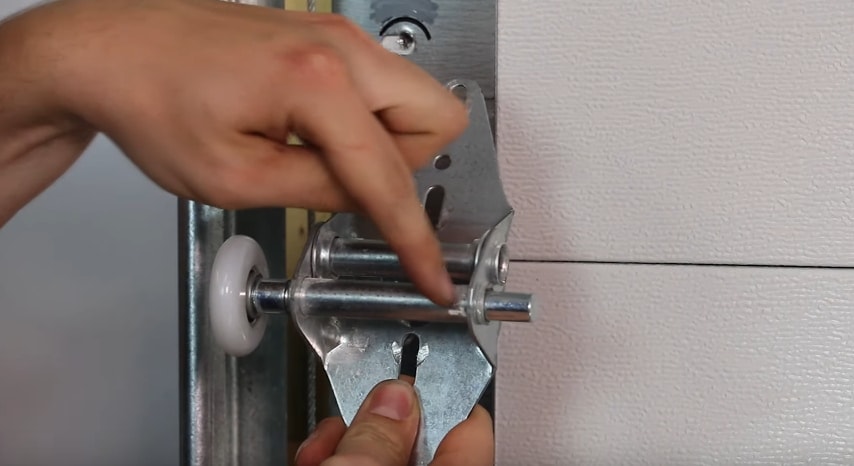
In addition to regular inspections, installing high-quality parts during the initial installation is an important step in ensuring long-term durability of your garage door system. Professional garage door installers will use quality materials like stainless steel tracks and nylon wheels which have been designed specifically for roller doors. This will help prevent rusting and corrosion over time due to exposure to weather elements such as rain or snow. Furthermore, they may also recommend using automated systems instead of manual ones since these require less maintenance overall.
TIP: Installing a new opener along with your repaired rollers/tracks is another great way to reduce future problems with your garage door – especially when compared with older models! With modern technology advancements, today’s electric gate motor units come equipped with features that make them more reliable than ever before; making them well worth investing in if you’re looking for improved peace-of-mind from your repairs! Moving forward into preventing rust and corrosion in garage door hardware requires taking preventative steps so that your investment lasts longer.
Preventing Rust And Corrosion In Garage Door Hardware
Rust and corrosion can be two of the most common problems for garage door hardware, but fortunately these issues are preventable. In order to keep your garage door in its best condition, it is important to take steps to disable rust and corrosion from taking hold on any of the components or parts.
This includes investing in high-quality materials that have been treated with anti-corrosive agents such as zinc coatings, plating, galvanizing, painting and oiling. Additionally, regularly cleaning and lubricating all of the moving parts helps protect them against potential damage due to friction caused by dirt buildup or exposure to moisture. It’s also important to inspect the tracks and rollers periodically for signs of wear and tear so they can be replaced before they become a problem. Taking these preventive measures will help ensure that you won’t have to deal with rust and corrosion as often when maintaining your garage door hardware.
In addition to preventing rust and corrosion from occurring in the first place, there may come a time where oxidation has already taken hold on some metal parts of the garage door system. In this case, understanding how do you remove oxidation from a metal garage door is key for restoring its original form and function.

How Do You Remove Oxidation From A Metal Garage Door?
Oxidation is a common problem that affects metal garage doors, and can cause corrosion of the door hardware. If left untreated, this oxidation can lead to further damage and even failure of components such as springs or tracks. Therefore, it is important to identify signs of oxidation on your garage door in order to take preventative measures before any major issue arises. One way to remove oxidation from a metal garage door is by cleaning it with a mixture of baking soda and white vinegar.
To start the process, mix one part baking soda with two parts white vinegar until you have formed a paste-like consistency. Once created, apply the paste directly onto the affected area using either a cloth or an old toothbrush. Let the paste sit for up to 10 minutes and then scrub gently in circular motions until all traces of rust are removed. Finally, rinse off the area with clean water and wipe dry with a paper towel or soft cloth. This simple method will help keep your garage door looking its best while also protecting against future damage caused by oxidation.
It is recommended that owners check their garage doors regularly for signs of rusting or oxidizing in order to ensure they remain functional over time. This can be done simply by examining any exposed metal surfaces for discoloration or flaking paint – both are indicators of possible corrosion due to oxidation taking place underneath the surface. Taking preventive steps like these can go far in preserving your garage door’s condition for years to come.
Frequently Asked Questions
How Often Should I Lubricate My Garage Door?
Lubrication is an essential part of maintaining a garage door in good condition. Without regular lubrication, the moving parts of the system can become dry and start to wear out more quickly due to friction. This can lead to various problems with the opening and closing mechanism, including noise, sticking or jerking motion. Therefore it is important for homeowners to carry out regular lubrication maintenance on their garage doors.
How often should a homeowner lubricate their garage door?
Generally speaking, it is recommended that the door’s tracks be oiled at least once every three months with a light machine oil like 3-in-1 Oil. The other metal components such as springs, hinges and rollers should also be lightly lubricated using white lithium grease or WD40 spray at least twice per year. To help ensure these tasks are done regularly:
• Make a note in your calendar so you remember when they need doing
• Ask someone else in your household to remind you
• Check if there is an annual service package available from your local garage door company
• Have reminders sent directly to your phone via online services such as Google Calendar
To maintain optimal performance levels and avoid common garage door issues, it’s important that regular maintenance activities are carried out according to manufacturer guidelines and frequency recommendations. Regularly monitoring and caring for your garage door will ultimately save time and money by avoiding costly repairs down the line.
How Do I Reset My Garage Door Opener After A Power Outage?
Resetting a garage door opener after a power outage can be done in several ways. The first step is to disconnect the power source from the unit. Once this has been completed, it is important to reset each of the settings on the unit as necessary. This may include setting the code for remotes and keypads, or resetting any manual controls that were set prior to the power failure. Additionally, if there are sensors installed on either side of the door frame, these should also be checked and adjusted accordingly.
It is essential that all safety measures are taken into account when dealing with a garage door opener during a power outage. If batteries have been drained due to lack of electricity, they should be replaced before attempting to reset any other settings or features. It is also important to check whether an emergency release lever exists within the system – if so, this must remain disengaged while performing maintenance tasks such as resetting the garage door opener.
Once all steps have been taken and double-checked against manufacturer guidelines, reconnecting the power supply and testing out various functions will allow users to determine whether their garage door opener has been successfully reset following a power outage.
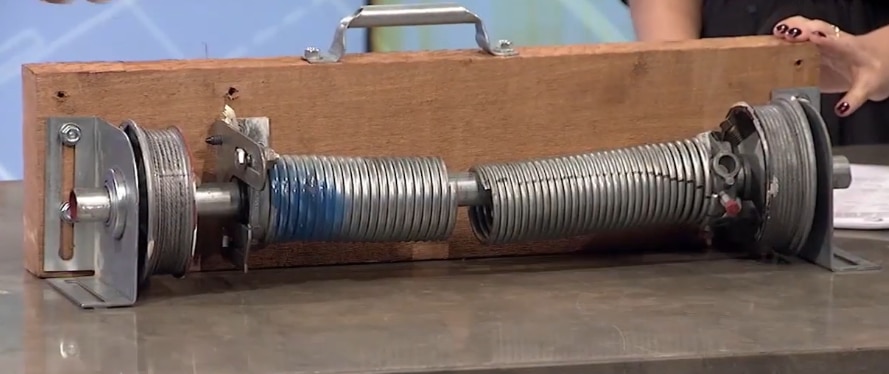
What Is The Best Way To Adjust A Garage Door Spring?
Adjusting a garage door spring is an important part of maintaining the safety and functionality of a home. If not done correctly, it can lead to potential injury or further damage to the system. It is essential for homeowners to understand how to adjust their garage door springs safely and accurately.
There are two types of springs used in most residential garage doors: torsion springs and extension springs. Torsion springs require specialized tools and should only be adjusted by experienced professionals who have received adequate training on how to do so properly. Extension springs are easier to adjust, but should still be handled with caution because they store large amounts of potential energy that can cause harm if released incorrectly.
The best way to adjust an extension spring is by using winding bars inserted into the holes at either end of the spring, which will allow homeowners to make small adjustments without having to use any additional tools. Additionally, when adjusting either type of spring, it is important that all hardware components remain secure throughout the process.
It is recommended that individuals familiarize themselves with basic maintenance tasks related to their garage door before attempting any repairs or adjustments on their own. This includes understanding pertinent safety protocols as well as reviewing manufacturer instructions regarding installation and adjustment procedures for both torsion and extension springs. By taking these precautions beforehand, homeowners can ensure their own safety while also preventing more serious issues from arising due to improper handling methods or lack of knowledge about proper maintenance techniques.
What Type Of Lubricant Is Best For A Garage Door Track?
When it comes to garage door maintenance, lubrication of the track is essential. Proper lubrication can help prevent squeaks and rattles, extend the life of the parts, and reduce friction in the moving elements. The type of lubricant used will depend on whether the track is made from metal or plastic components.
For a metallic track, non-aerosol silicone spray or graphite powder should be used. Non-aerosol sprays are preferred due to their ability to penetrate deep into crevices without causing corrosion over time. Graphite powder can also help reduce friction while allowing for smooth operation of the system as a whole.
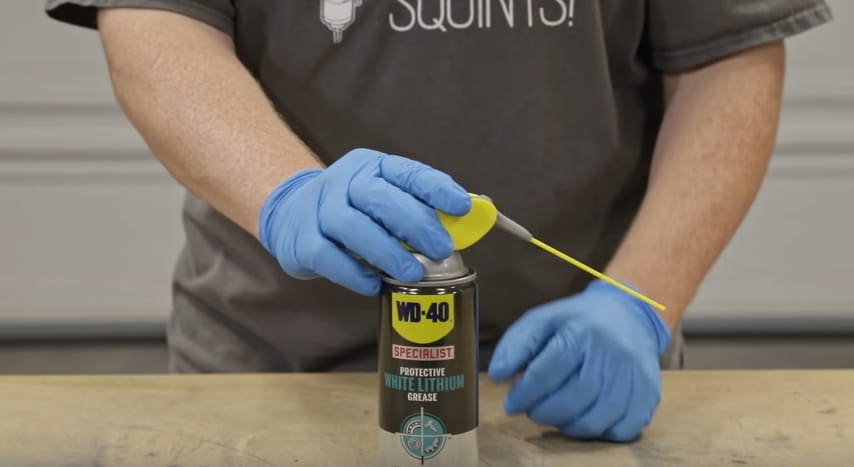
For plastic tracks, only use grease specifically designed for plastics that does not contain petroleum-based solvents. This kind of grease will keep dust buildup at bay and ensure continuous proper functioning of your garage door track. It should be applied just like the other types – evenly along both sides of the rail with an applicator brush or cloth rag in order to maximize performance and minimize wear and tear over time.
How Do I Know When My Garage Door Needs To Be Replaced?
Knowing when to replace a garage door is an important part of upkeep in order to ensure it operates properly and safely. There are several signs indicating that the time has come for replacement, such as difficulty opening or closing the door, loud noises while operating, visible rust and wear on parts, bending or bowing along the panels, and gaps between sections of the door. Additionally, if the weatherstripping appears worn out or broken, this could be another indication of needing a new garage door.
It is also important to consider how old your current garage door is – if it’s been more than 15-20 years since you installed it then chances are its life expectancy has run out and needs to be replaced. An older model may not provide sufficient insulation against extreme temperatures which can lead to higher energy bills. In addition, some models may no longer comply with safety regulations set by local governments or manufacturers.
Replacing an outdated model with a newer one can save money over time due to improved performance from superior technology and enhanced security features; these benefits should be taken into account when deciding whether to replace your current garage door. Furthermore, having a professional inspect your system regularly will help identify problems before they become major issues so you can keep up with maintenance requirements and extend the life of your garage door even further.
Conclusion
Garage doors are an important part of the home, providing security and temperature control. However, they can be prone to a variety of problems if not properly maintained. Regular lubrication is essential for smooth operation and extending the life of the door, as well as resetting the opener after power outages. Knowing how to adjust garage springs or replace worn parts can also help prevent future issues. Lubricants specifically designed for garage door tracks should only be used for best results. Lastly, it may become necessary to replace an old door that has seen better days in order to continue efficient use.
Taking care of a garage door requires time and knowledge but will pay off with years of reliable performance. Understanding common problems and preventive maintenance techniques makes keeping a door in good condition much easier. Properly lubing all moving parts on a regular basis helps ensure smoother operation and fewer repairs over time. Additionally, understanding when to make adjustments or replace components allows homeowners to keep their doors working safely and efficiently for many years ahead.
In conclusion, caring for a garage door is an important step towards maintaining safety around the home while preventing costly repairs down the road. It’s wise to familiarize oneself with common problems and preventive measures such as lubricating regularly, resetting openers after power outages, adjusting springs correctly, using appropriate types of lubricant on tracks, and knowing when replacement is needed. Taking these steps ensures that garage doors remain dependable long into the future.
References:
Common Garage Door Problems
Troubleshooting Common Garage Door Problems
12 Common Garage Door Problems… And How To Solve Them!

